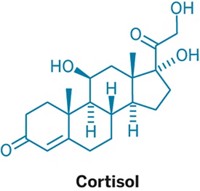Advertisement
Grab your lab coat. Let's get started
Welcome!
Welcome!
Create an account below to get 6 C&EN articles per month, receive newsletters and more - all free.
It seems this is your first time logging in online. Please enter the following information to continue.
As an ACS member you automatically get access to this site. All we need is few more details to create your reading experience.
Not you? Sign in with a different account.
Not you? Sign in with a different account.
ERROR 1
ERROR 1
ERROR 2
ERROR 2
ERROR 2
ERROR 2
ERROR 2
Password and Confirm password must match.
If you have an ACS member number, please enter it here so we can link this account to your membership. (optional)
ERROR 2
ACS values your privacy. By submitting your information, you are gaining access to C&EN and subscribing to our weekly newsletter. We use the information you provide to make your reading experience better, and we will never sell your data to third party members.
Biological Chemistry
Neurons Can Control Their Activity Via DNA Methylation
Epigenetics: DNA demethylation enzyme helps prevent nerve cells from getting too excited or too calm
by Michael Torrice
April 30, 2015
| A version of this story appeared in
Volume 93, Issue 18

Neurons may modify their DNA on a regular basis to adjust their level of activity, a new study reports. The cells change the pattern of methyl groups on their DNA to strengthen and weaken the connections—or synapses—they make with their neighbors.
The findings provide more support for the idea that DNA modifications, known as epigenetics, may play a fundamental role in learning and memory.
For a long time, biologists thought DNA methylation was static in fully developed cells such as neurons. But in the past decade, researchers have found evidence that these DNA methylation patterns are more fluid than previously thought. In particular, some studies have shown that enzymes called Tet proteins, which help remove methyl groups from cytosine bases in DNA, are involved in memory formation.
In the new study, Hongjun Song of Johns Hopkins University School of Medicine and colleagues found that one of these enzymes, Tet3, helps tune how neurons respond to signals from their neighbors (Nat. Neurosci. 2015, DOI: 10.1038/nn.4008). When the researchers reduced the amount of Tet3 expressed in cultured neurons, the cells’ responses to incoming signals got larger. Overexpressing the enzyme had the opposite effect.
Through further experiments, the team found that Tet3 influences neuronal responses by somehow controlling the number of glutamate receptors at a nerve cell’s synapses. For example, adding receptors strengthens synapses and allows cells to amplify their responses.
Changing the strength of synapses, neuroscientists think, is a key step in learning and memory. And Tet3 appears to tune synapses as part of a process to ensure neuronal activity doesn’t get too high or too low. If neurons become excessively active or inactive, they are less able to respond to signals from their neighbors.
Neurons are taking some big risks using demethylation to control their activity, says Li-Huei Tsai, a neuroscientist at Massachusetts Institute of Technology. Demethylation requires oxidizing methylated DNA, so there are plenty of opportunities for the cellular machinery to accidentally damage DNA and create mutations.
“I wonder if by engaging in this risky business, neurons set themselves up for degeneration over time,” Tsai says.





Join the conversation
Contact the reporter
Submit a Letter to the Editor for publication
Engage with us on Twitter